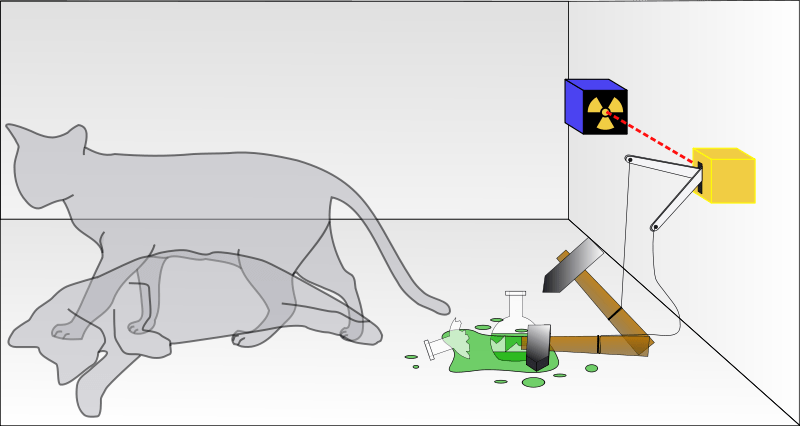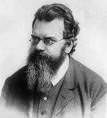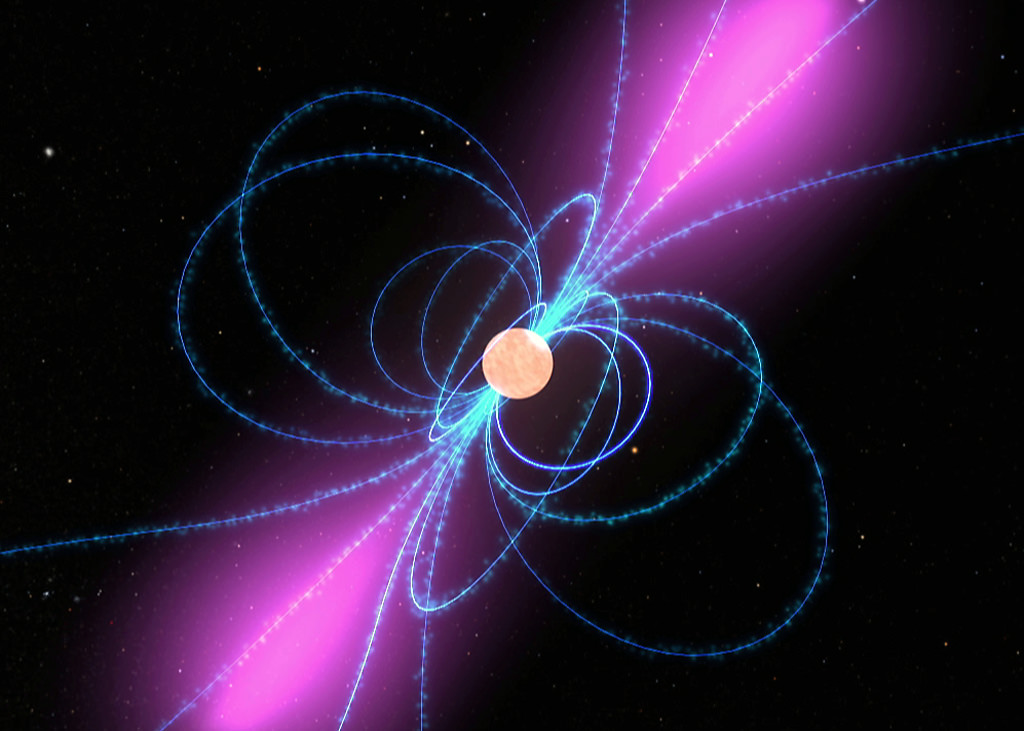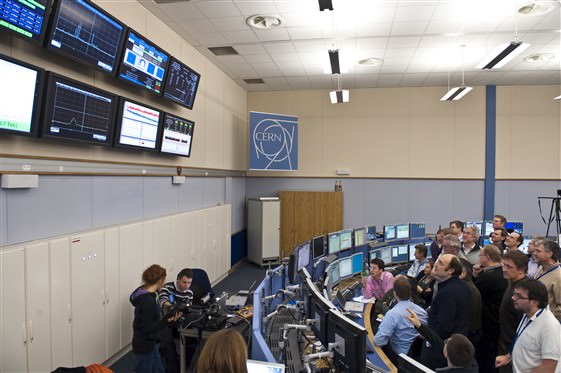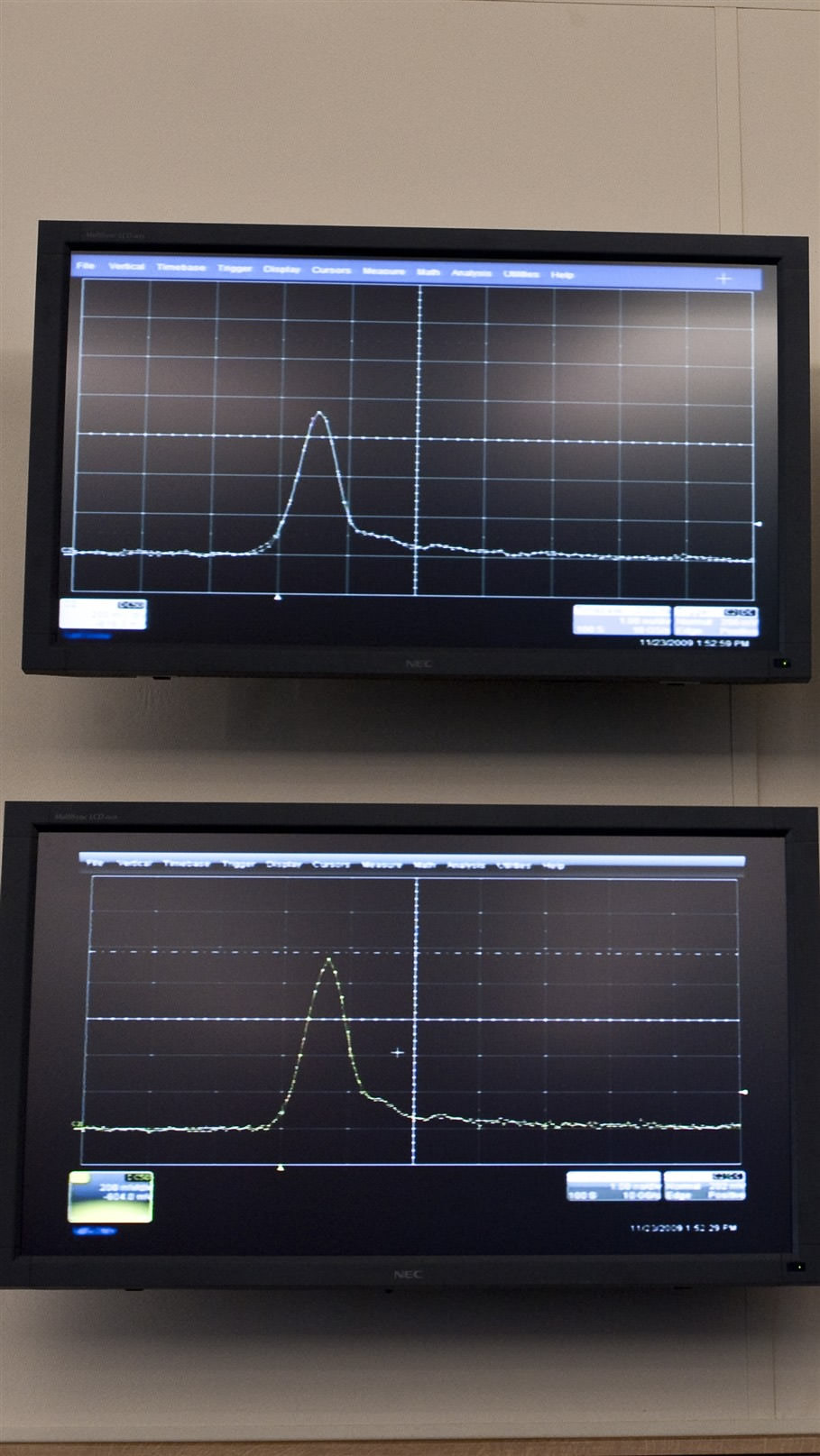Schrodinger’s cat is named after Erwin Schrödinger, a physicist from Austria who made substantial contributions to the development of quantum mechanics in the 1930s (he won a Nobel Prize for some of this work, in 1933). Apart from the poor cat (more later), his name is forever associated with quantum mechanics via the Schrödinger equation, which every physics student has to grapple with.
Schrodinger’s cat is actually a thought experiment (Gedankenexperiment) – and the cat may not have been Erwin’s, but his wife’s, or one of his lovers’ (Erwin had an unconventional lifestyle) – designed to test a really weird implication of the physics he and other physicists was developing at the time. It was motivated by a 1935 paper by Einstein, Podolsky, and Rosen; this paper is the source of the famous EPR paradox.
In the thought experiment, Schrodinger’s cat is placed inside a box containing a piece of radioactive material, and a Geiger counter wired to a flask of poison in such a way that if the Geiger counter detects a decay, then the flask is smashed, the poison gas released, and the cat dies (fun piece of trivia: an animal rights group accused physicists of cruelty to animals, based on a distorted version of this thought experiment! though maybe that’s just an urban legend). The half-life of the radioactive material is an hour, so after an hour, there is a 50% probability that the cat is dead, and an equal probability that it is alive. In quantum mechanics, these two states are superposed (a technical term), and the cat is neither dead nor alive, or half-dead and half-alive, or … which is really, really weird.
Now the theory – quantum mechanics – has been tested perhaps more thoroughly than any other theory in physics, and it seems to describe how the universe behaves with extraordinary accuracy. And the theory says that when the box is opened – to see if the cat is dead, alive, half-dead and half-alive, or anything else – the wavefunction (describing the cat, Geiger counter, etc) collapses, or decoheres, or that the states are no longer entangled (all technical terms), and we see only a dead cat or cat very much alive.
There are several ways to get your mind around what’s going on – or several interpretations (you guessed it, yet another technical term!) – with names like Copenhagen interpretation, many worlds interpretation, etc, but the key thing is that the theory is mute on the interpretations … it simply says you can calculate stuff using the equations, and what your calculations show is what you’ll see, in any experiment.
Fast forward to some time after Schrödinger – and Einstein, Podolsky, and Rosen – had died, and we find that tests of the EPR paradox were proposed, then conducted, and the universe does indeed seem to behave just like schrodinger’s cat! In fact, the results from these experimental tests are used for a kind of uncrackable cryptography, and the basis for a revolutionary kind of computer.
Keen to learn more? Try these: Schrödinger’s Rainbow is a slideshow review of the general topic (California Institute of Technology; caution, 3MB PDF file!); Schrodinger’s cat comes into view, a news story on a macroscopic demonstration; and Schrödinger’s Cat (University of Houston).
Schrodinger’s cat is indirectly referenced in several Astronomy Cast episodes, among them Quantum Mechanics, and Entanglement; check them out!
Sources: Cornell University, Wikipedia

